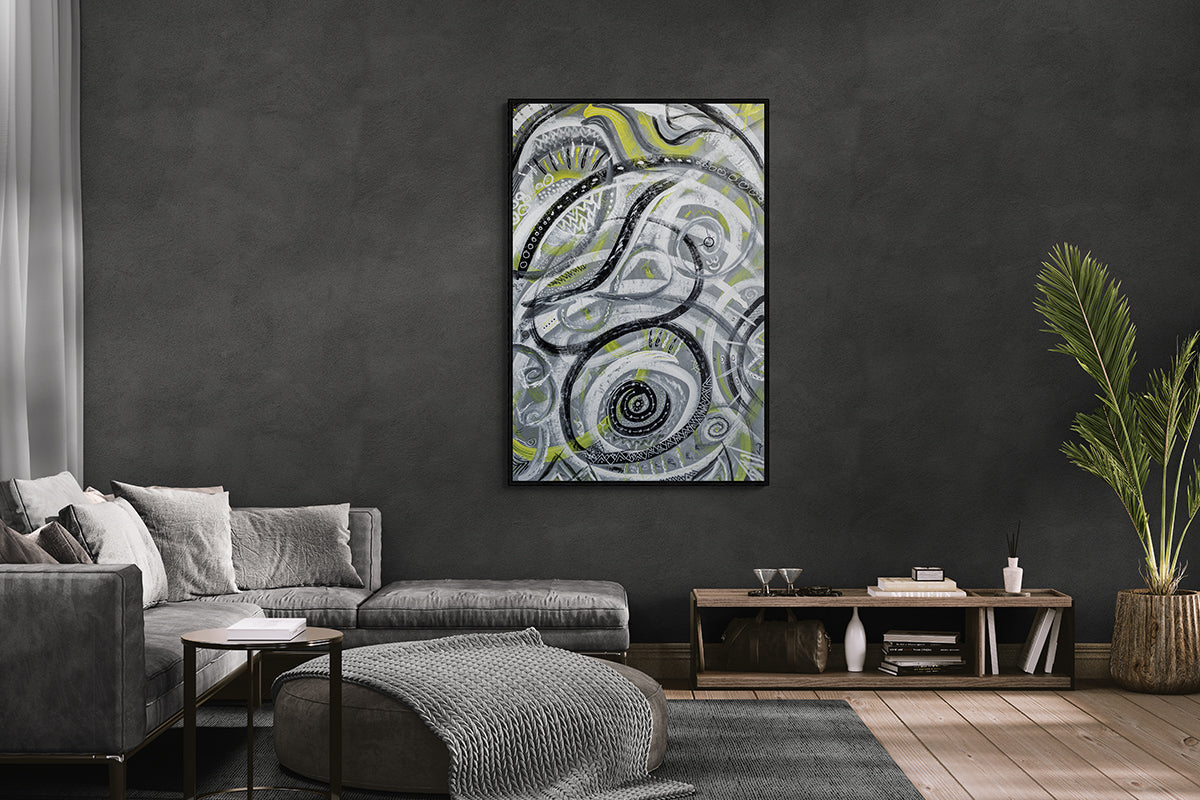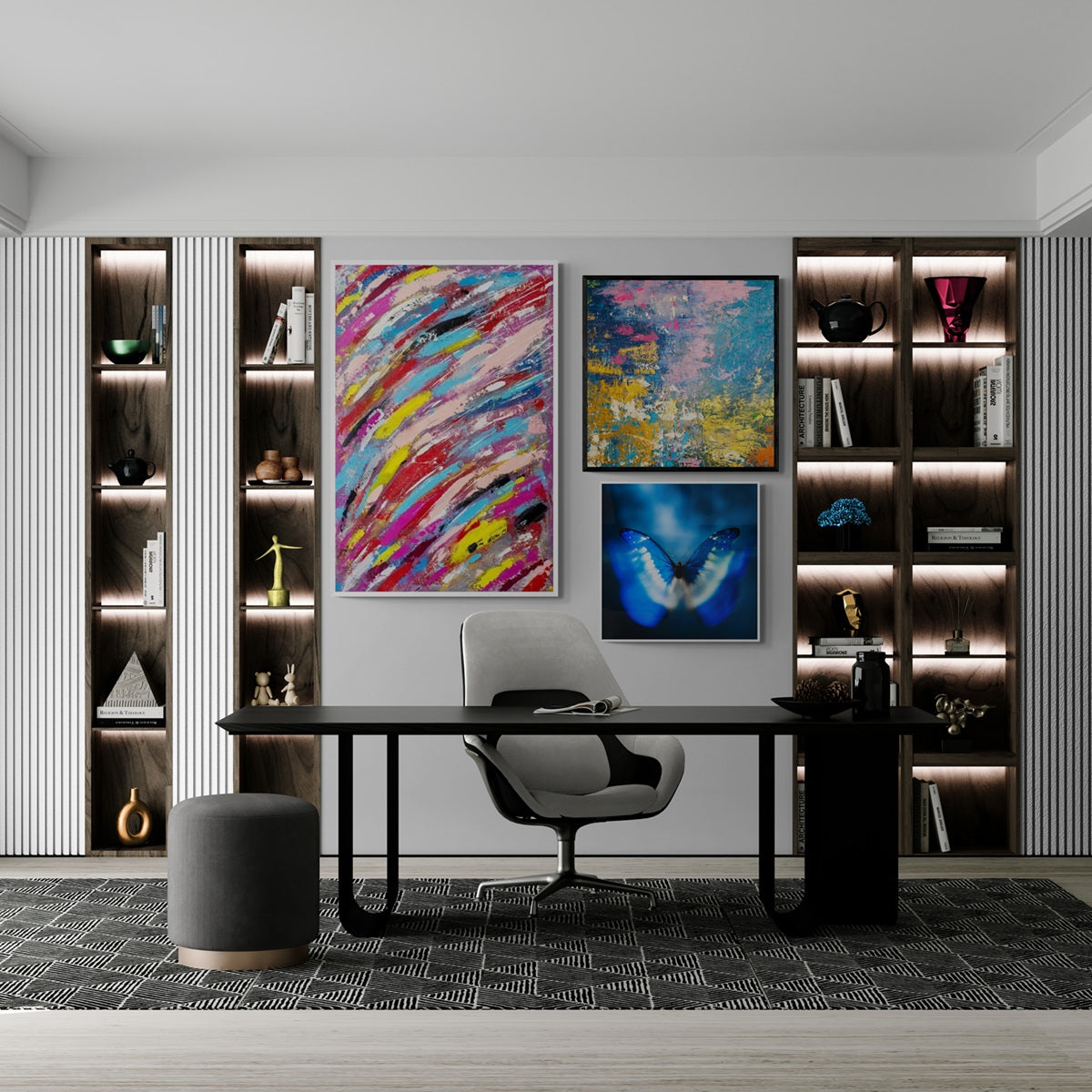Mixing different art styles in one room can feel a bit risky at first, especially when you're working with pieces that have very different moods, colors, or formats. But when it’s done with some care, the mix can feel personal, warm, and incredibly unique. The goal isn’t to follow trends or stick to one narrow look. It’s to create a space that feels like you. Whether you’ve collected artwork over time or just started searching for art for the home, your space should reflect your taste.
The beauty of combining varied art is that it brings out contrast and unexpected harmony. A vintage painting next to a sharp-edged abstract piece, or a soft photograph placed near a bold sculpture, can spark conversations and keep the room from feeling flat. Mixing styles lets you play with scale, color, texture, and subject matter in a way that a single-style setup can’t always do. To keep that from turning messy, it helps to know a few useful tips before putting everything up on the wall.
Understanding Your Space and Style
Before you start hanging or rearranging pieces, step back and take a good look around your space. Understanding what you're working with will help you make choices that actually fit the room, not fight against it. Here are a few simple ways to get that part right:
- Check the room’s layout and lighting. Ask yourself: Is this space bright or shaded? Big or small? Open or cozy? That changes how bold or quiet your artwork should be.
- Look at your furniture, rugs, wall color, and even floor tone. These things shape the overall feel and affect how well certain pieces will sit. Soft colors might blend into a beige wall but pop on navy or charcoal.
- Notice existing colors and textures. Are there a lot of patterns? Minimalist lines? Natural wood tones? Your art should feel like a natural extension, not an afterthought.
Next, focus on your personal taste. If you’re drawn to abstract pieces but also love black-and-white photography, that’s totally fine. The key is knowing which pieces deserve the spotlight and how to let others support without clashing. You don’t need one kind of art in every room. You just need a reason for each piece to belong.
Think about the room's function too. A living room might feel good with something bold and colorful. A bedroom might call for something more quiet and calm. Choosing art for the home should work with the way you want to feel in the space.
Creating a Visual Balance
The trick to making different art styles work in a single space comes down to balance. When a room feels just right, it’s likely that thought went into how the art was placed. It’s not about matching everything. It’s about guiding the eye, building connections, and keeping the space from feeling messy.
Here are a few ways to strike that balance:
- Use color connections. Even if two pieces are very different, they can hang well together if they share a color. A red detail in a photo and a red brushstroke in a painting might be all you need.
- Look for shared themes. Sometimes mood or subject ties pieces together. A strong minimalist print might pair beautifully with a soft landscape if both feel quiet and slow.
- Choose frame styles that work together. Matching frames—or those with similar tones—can help make different artworks feel part of the same story.
- Vary the size. Don’t hang artworks that are all the same size. Mix large statement pieces with smaller ones. This adds flow and keeps the eye moving around the room.
- Create a focal point. Pick one piece you want to stand out. Then arrange the rest in a way that lets it lead the space visually without being overwhelmed.
A balanced room doesn’t have to feel even or quiet. It just means everything feels like it fits, even if every piece is a little different. That’s when art in the home really works.
Incorporating Different Mediums
Mixing different types of artwork makes your space feel thoughtful and layered. Pair paintings with photography. Add sculptures or other objects. These combinations give the room depth and texture that furniture and paint alone can’t create.
To keep the blend working, don’t crowd one style or medium. If there’s nothing but framed photos, the room might fall flat. Mix in a bold canvas or a sculpture to break it up. A sculpture placed under a wall piece adds height and stops the eye from getting stuck at one level.
Fine art photography and abstract painting work great together. Photography often has clean lines and realism, while paintings feel expressive, even messy. Putting them near each other draws attention to what makes each special.
Texture also brings interest. Here’s how:
- Use real, museum quality canvas over smooth paper prints.
- Add wood, glass, or metal elements in nearby pieces.
- Let lighting show off textured surfaces.
There’s no need to overload. Just a few small contrasts in texture or material can say a lot. Think about what each object adds to the overall feeling. From a shiny photo print to a rough piece of pottery, every texture plays a part.
Practical Tips for Art Arrangement
Art arrangement can make or break how different styles come together. With mixed media and varied styles, layout holds the room together.
Try one of these arrangement styles:
1. Grid: Best for artwork that’s similar in size or shape. This keeps things neat and adds order to an otherwise mixed set.
2. Linear row: Great for narrow spaces like hallways. Keep your pieces in a straight horizontal or vertical line.
3. Salon wall: A more relaxed gallery featuring a mix of shapes and sizes—ideal for those who enjoy combining different media and styles on a single wall, like the example image we used in this blog 😉.
No matter the style, keep these tips in mind:
- Use even spacing between pieces, so nothing feels off.
- Hang at eye level. Roughly 57 to 60 inches from the floor to the center works for most people.
- When hanging above furniture, leave 8 to 12 inches of space. This prevents the room from feeling cramped.
Lighting also matters. It helps show texture and softens strong contrasts. Directional spotlights are great for sculptures or bold textures. Softer overhead light works well for a large grouping. If natural light comes in, make sure it doesn’t create glares or fade the art.
When it feels done, step away. Come back into the room with fresh eyes. If your gaze flows from piece to piece and nothing feels out of place, you’ve done it right. That’s the sign your style mix is working.
Discover Unique Art for Your Home
When it comes to unique artwork, combining fine art photography and abstract painting gives each space a personal edge. These two styles are different enough to show contrast but easy to pair if you want a layered mood.
Joe Papagoda’s artwork brings that mix to life. His original pieces merge these two styles, blending abstracted texture, movement, and feeling. Whether you lean toward sharp black-and-white images or bold color washes, there’s something within that mix that could fit your home.
Finding the right art for home isn’t just about taste. It’s about creating a place that reflects you. With free shipping within the USA, your next favorite piece could already be within reach.
Bringing It All Together: Your Personal Art Gallery
Mixing styles isn’t about rules. It’s about trust. Only you know what each piece means to you, and only you can bring that into your living space in a way that feels right.
You’re not copying a magazine spread or an installation. You’re building something personal. Something that tells your story in color, line, and form. That could mean placing a quiet photo next to a bright brushstroke, or letting a sculpture anchor a wall filled with smaller frames.
Your walls don’t need to match. They just need to make sense to you.
A home filled with mixed art can feel sharp, fresh, and fully lived-in. The more you let your instinct guide the process, the more your space starts to look like yours and no one else’s.
Mixing different art styles in your living space is about creating a personal reflection of your taste and personality. To keep curating pieces that feel like you, explore ArtFinest's selection that blends fine art photography and abstract painting. Discover standout choices in art for the home that bring texture, contrast, and character to your space.



